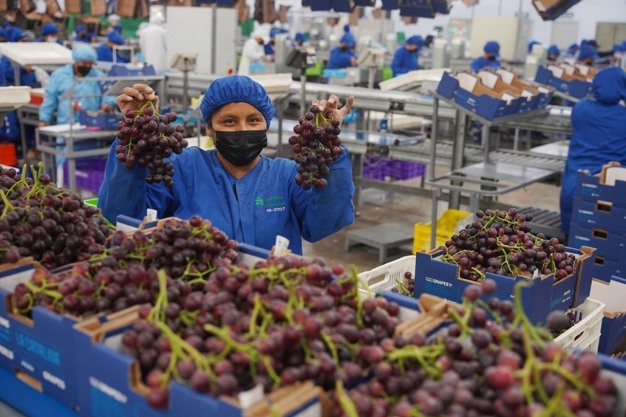The Ministry of Agricultural Development and Irrigation (Midagri) announced through the National Agricultural Health Service that the country had exported 562,093 tons of grapes in the 2024-2025 grape season, making Peru the world's leading exporter for the second consecutive year.
Grape exports reached 44 international markets. Eighty-three percent of Peruvian grape exports were concentrated in three key markets: the United States (46%), European countries (24%), and Mexico (8%). Other outstanding destinations include the United Kingdom, Spain, Canada, Hong Kong, Colombia, China, and Taiwan.
 © Midagri Perú Photo: Midagri
© Midagri Perú Photo: Midagri
Peru's grape export season runs mainly from October to April of the following year. The country exports more than 56 table grape varieties. Exports are led by the Sweet Globe, Red Globe, and Allison varieties, the most demanded in the international market.
A few weeks before the end of the export season, Senasa authorized 137 packing plants and certified more than 22,000 hectares of crops, distributed mainly in the regions of Ica (47%) and Piura (36%), followed by Lambayeque (7%), La Libertad (4.8%), Arequipa (3.8%), and other regions such as Ancash, Lima, Moquegua, Tacna, and Cajamarca (which together account for 1.4%).
These results would not have been possible without the active participation of producers, agricultural organizations, and authorities committed to carrying out integrated fruit fly pest control under the technical guidance of Senasa.
Commercial windows
In the last few years, Senasa has secured access for Peruvian grapes to Japan, China, and Ecuador in a joint effort with the Association of Table Grape Producers (Provid). Thanks to these efforts, Peru can export grapes to more than 92 international markets.
To promote the sustainable growth of this agro-export sector, Senasa has started issuing phytosanitary certifications to export fresh fruits in reefers (under cold treatment) - a first in South America -through the port of Paracas, Ica, starting in December 2024.
Senasa continues to work hand in hand with the private sector, including the Association of Exporters (Adex), to expand the country's commercial portfolio and continue strengthening the export growth of Peruvian producers.
Along the same lines, negotiations continue with the authorities of Israel, Chile, and the Philippines to open these markets for Peruvian products.
For more information:
Ministry of Agrarian Development and Irrigation
www.gob.pe
